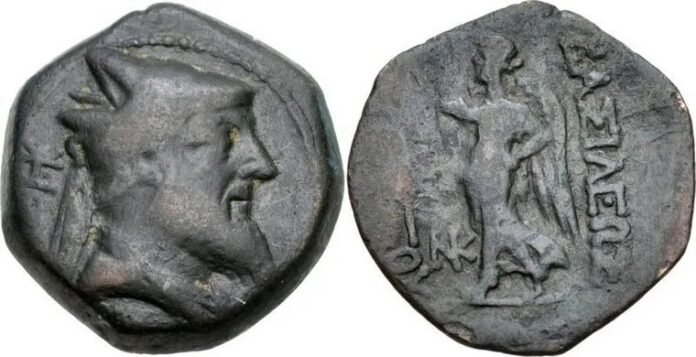The Kingdom of Sophene, or Tsopk in Armenian, was an ancient Armenian state from the 3rd century BCE until 94 BCE. It was situated in between the region of historical Armenia known as Tsopani and Syria, in the southwestern part of present-day Armenia and eastern parts of modern-day Turkey.
The Kingdom of Sophene emerged as an independent kingdom during the breakup of the Seleucid Empire, which controlled vast territories in the ancient Near East. The domain was initially ruled by the Orontid, a local Armenian dynasty, and later by the Artaxiad dynasty. Sophene was one of the first Armenian kingdoms to mint its coins, a testament to its political and economic influence during that period.
In 94 BCE, King Tigran, the Great of Greater Armenia, also known as Tigranes II, annexed Sophene into his expanding empire. Tigran, the Great’s reign marked the height of Armenian power in the region, stretching his kingdom from the Caspian Sea to the Mediterranean.
Before the collapse of the Seleucid state, Sophene and Commagene were part of a single kingdom ruled by the younger branch of the Yervandid (Orontid) dynasty. Sames (Samos) was one of the first kings of this united kingdom, and he founded the city of Samosata on the Euphrates River.
Initially, the kingdom was a semi-autonomous region within the Seleucid Empire. As a special satrapy, it was required to pay tribute and provide troops but was governed by local hereditary kings who enjoyed internal independence. At times, the kingdom could break free from Seleucid control completely.
In the mid-3rd century BCE, Sophene was ruled by Sames’ successor, King Arsham (Arsam). He was one of the first Armenian rulers to mint his coins and founded the city of Arshamashat (Arsamosatu) on the left bank of the Euphrates tributary, the Aratsani River.
Around 240 BCE, Arsham attempted to declare independence from the Seleucid Empire but ultimately failed and submitted to their rule. His son Xerxes inherited the throne and, upon assuming power, refused to pay tribute to the Seleucid treasury. In response, Antiochus III besieged Arshamashat, the capital of Sophene.
Following negotiations, the conflict was resolved. Antiochus married his sister Antiochis (Antiochida) to the rebellious Armenian king Xerxes, forgave the debt, and Xerxes recognized the power of the Seleucids. However, sometime later, Antiochida killed her husband Xerxes and annexed the Kingdom of Sophene.
This historical account highlights the complex political relationships between the various kingdoms and empires in the region during that time and the struggles for independence and power experienced by the Armenian kingdoms.
